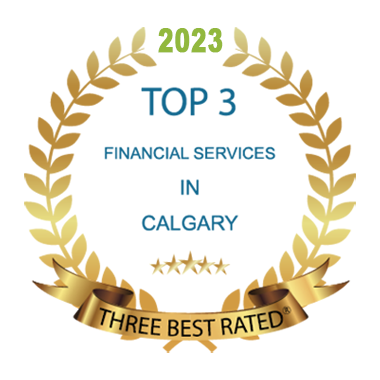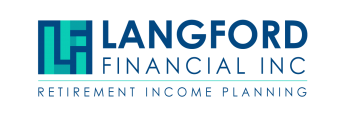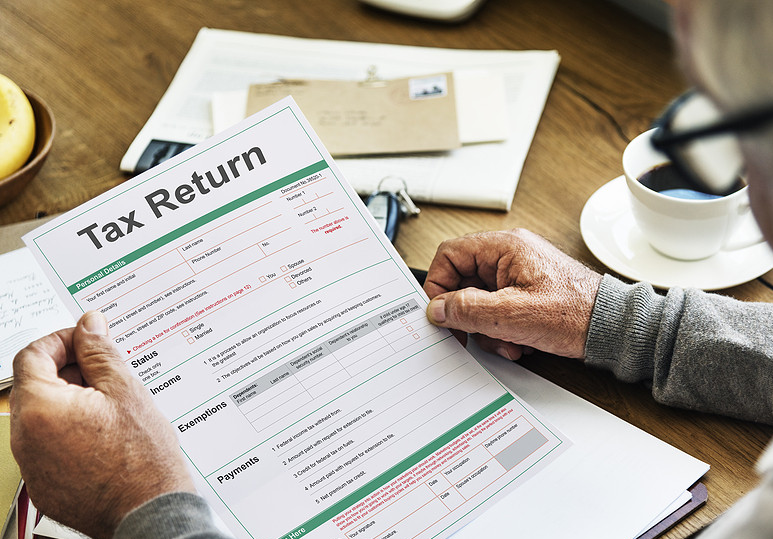The 7 Deadly Sins of Retirement Income Planning
1. Waiting Too Long to Start Planning
“I wish I had met you guys when I was 60”. We hear it all the time. Retirees in their late 60’s and early 70’s realizing that they have run out of time to maximize their retirement income and pay fewer taxes. There are numerous tax savings strategies that need to be taken advantage of as early as possible. There are opportunities to contribute to an RRSP to increase retirement savings and to reduce taxes. This opportunity is only available until the year you turn 71.

We recently had a client who is 68 and still earning a good income. She is in a 30.5% marginal tax rate. Every hundred dollars she contributes to her RRSP gets her $30.50 back in taxes. Not only does she get a good tax refund, but the RRSP contribution reduced her overall income and eliminated the $2700 OAS clawback she was experiencing. This is good news in one sense, that she is saving on taxes and building some savings for when she can’t work, but bad news when you consider that she could have started this strategy many years prior and saved $1000’s in taxes and lost OAS benefits.
2. Not understanding Government Pensions like CPP & OAS
As leading providers of educational workshops on CPP & OAS, we spend a lot of time with individuals 59+ helping them understand how these benefits work. It amazes us the level of misunderstanding, myth, and misinformation there exist around these government benefits. OAS is fairly straightforward, except for the qualifications of receiving the guaranteed income supplement (GIS) for lower-income seniors, but CPP is incredibly complex. The big decision for most people is whether they should start taking their CPP benefit at age 60. The second biggest question is how CPP benefits work if a contributor is collecting CPP and still working in their 60’s. We put on regular workshops to educate our potential clients on these matters.
Probably, the biggest missed opportunity is for seniors between the age of 65 and 70 that are still earning employment income - which there are plenty. Did you know that it is optional to contribute to CPP between the ages of 65 and 70? If you do contribute to CPP then your employer must also contribute. So believe me, your employer isn’t going to be encouraging you to contribute, and may even downplay the significance of doing so.
Here’s the deal. If you contribute to CPP and you are receiving CPP you earn what are called post-retirement benefits (PRB’s for short). These PRB’s are calculated as an increase to your CPP pension cheque the following year. I won’t get into the complicated calculation, but basically, these PRB’s are especially valuable for those who over 65 and still working. You will get approximately 16-18% return on your payroll CPP deductions. These PRB’s are paid out starting the next year and will be paid to you for the rest of your life and indexed for life. This is the best deal in Canada. Where else can you invest and get a 16-18% return on your money with that return guaranteed and indexed for life? But, many seniors miss this opportunity because they do not understand how it works. Nancy always says, “You don’t know what you don’t know”.
How about survivor benefits for widows, widowers, and children.
How about CPP credit splitting for couples who divorce.
We are always amazed by the amount of money Seniors leave on the table in missed opportunities, paying too much in taxes, and as a result, reducing their retirement income.
I don’t want to take too much time and space right here. Sign up for our 6-part workshop presentation below.
3. Getting Clawed back on OAS because of the improper distribution of their income.
Unlike CPP, which is a member contributory plan, OAS is paid out of general tax revenues. You have to work and pay into CPP in order to qualify for a CPP pension starting at age 60. OAS, on the other hand, is paid to everyone in Canada who has been a resident for at least 10 years. 40 years of living in Canada qualifies you for a full OAS pension at age 65. ($614.14/Month for October 2020)
OAS is means-tested, which means that once your income reaches a certain level, you begin to get “Clawed back” on your pension. That threshold for 2020 is $79,054. For every dollar that you have in reported taxable income above this number, you will see a reduction in your OAS cheque of 15 cents per dollar above the threshold. If you make an extra $10,000 then your OAS will be reduced by $1500 for the next year.
It can be argued that if a person is making that much money, they shouldn’t need it anyway. It can also be argued that you spent your whole life working, contributing, and paying taxes in this country, so you are entitled to all of your benefits, whether you need it or not.
I’d rather focus on how we can ensure you do not lose it. We can do this by structuring your income in the right way as to keep your annual income below the $79,054 threshold. It isn’t always possible, but let’s try.

When you consider all of your “income-producing assets”, you have to determine which of these assets to take your income from, and when is the appropriate time to take that income. Consider this list of assets that can produce income for you:
- CPP, OAS & GIS.
- Company Pensions (DB, DC, and group RSPs)
- RRSP, TFSA, RIFF
- Cash Savings
- GIC’s
- Annuities
- Rental Income
- Employment Income
- Dividends from a business
- Life Insurance Policies
- Business Income
- Individual stocks and dividends
For example, a mistake many Canadians make is with their RRSP. If you take it too late, like at age 72, it could force you above the threshold of $79,054 and you start losing your OAS benefits and paying more taxes than necessary.
Delaying CPP or OAS benefits later into your 60’s will mean an increased benefit, but it could be for nothing if the increase puts you in a situation to have your OAS clawed back. This is especially applicable to single retirees that cannot split income.
A few years ago, Nancy’s parents sold their house. They were low-income Seniors in their early 80’s. They had owned their house for more than 30 years, so there was no capital gain tax to pay, as it was their primary residence. What they did not account for was they had a rental suite at the end of the house that they had been generating income from for those 30 years. In fact, Nancy and I lived there when we were first married.
Now they were faced with a capital gain on that portion of the overall value of the property. That taxable gain resulted in an increase in their overall income, which resulted in them losing their Guaranteed Income Supplement, which resulted in them no longer qualifying for their Provincial medical coverage for an entire year, and also resulted in a tax bill they were not expecting.
The little bit of money they made from their house, which represented their life’s savings, was then used to pay for taxes and prescription drugs for a year. There were ways they could have avoided this whole situation with some better advice 10-20 years ago as they were entering retirement.
You don’t know what you don’t know - but it can still harm you
4. Not utilizing Annuities because they think the rates are too low
Rather than give you a whole lesson on Annuities, I’ll point you to another piece on the subject by MoneySense magazine. The point we need to consider here is that Annuities provide us with a level of guaranteed income for life. When it comes to some of our fixed expenses we should definitely look at how we can utilize Annuities. Many retirees have a lot of money tied up in GIC’s or "high-interest TFSA's" that are earning next to nothing. In fact, GIC’s are not even keeping pace with inflation. Annuities offer a much better rate of return than GIC’s and are much more tax efficient.
Prescribed annuities offer one of the best tax-saving structures available. Also, insured annuities can work for some people, depending on their health. As interest rates begin to rise in the coming years, annuities will gain in popularity. Currently, in 2022, annuity payouts have increased by 12% YTD.
One of the best options for retirement income is to take a portion of your savings and create your own Personal Pension Plan with a Guaranteed Minimum Withdraw Benefit (GMWB). These structures fall under the “annuity” umbrella and are offered by insurance companies and are only available through licensed insurance agents, which we are.
Here’s how they work:
- You can choose any type of investment vehicle to make this work, such as an RRSP, TFSA or Non-registered.
- You select the investments from a broad range of funds.
- You can switch funds as necessary to adjust to market conditions
- You always have access to your money if you need it
- You can decide at which point you want to start drawing a monthly income, which is then set and guaranteed for life.
- Depending on your age when you start, the payout rate will generally be between 4-6% of the value of your account.
- Your money is guaranteed. It is a known fact that retirees who have guaranteed income are happier and enjoy a more worry-free retirement.
- We work with numerous insurance companies and can compare several plans.
It may not be advisable to use all of your savings this way, but it certainly makes sense to consider it as part of your retirement income planning.
5. Not optimizing CPP by starting too early or too late
The decision when to take CPP needs to be a mathematical and not an emotional decision. Unfortunately, it becomes an emotional decision. Too many people make their decision based on hearsay. Once you start taking CPP, you have a very small window of opportunity to reverse that choice (4months), otherwise, it’s yours forever. Age 65 is considered the “Normal Retirement Age” that all of the numbers are based on. A maximum retirement pension in 2022 for someone age 65 is $1253/month. If Joe, who is age 60 decides to take CPP this year. Assuming he qualifies for the max his pension will be $802/mth. Because he is taking it early he will have an “age adjustment’ reduction of .6% per month, so because he is taking it 60 months early he will see a 36% reduction. (.6 X 60 months = 36%).
On the flip side, if he delays his pension to age 70 he will get a .7% increase per month for every month he delays it. (.7% X 60 months = 42%) If Joe was 70 this year and now applying for his CPP he will get a total of $1779/month.
Don’t be lured away by the numbers alone. There are in fact, many considerations to keep in mind.
- Longevity - if it’s not in your genes, you may want to take it early
- Break-even points. At what point does a 65-year-old catch up to the guy who takes his CPP at age 60? Answer: approximately 75. It will take the 70-year-old new CPP recipient until age 77 to catch up with the other guys and age 82 to surpass the 65-year-old.
- If you already qualify for a maximum CPP benefit because you have 39 years of maximum contributions there really isn’t any benefit to waiting until age 65 to collect. You may be better off starting early and getting the Post Retirement Benefits.
6. Paying way too much income tax because of poor tax planning
Here’s an interesting point. The tax system is biased towards married couples. Look at this. If a single person age 65 was earning $60,000 a year she would pay about $12,000 in income tax. A couple earning the same amount together would only pay about $6000 in total. That’s a big difference.

A couple can split their CPP benefits and other pensions and reduce tax. There are other opportunities for couples to split income, but not so for the single retiree.
Tax avoidance is illegal but, tax reduction is admirable. We have touched on a few ways to reduce taxes, but here are few more.
- Prescribed rate loan
- Interest expenses on investment loans
- Capital gains, dividends, interest income - in that order. Interest from GIC’s, therefore, is the worst kind of income.
- Permanent Life Insurance - money can grow tax-deferred and tax-free
- Proceeds of an insurance policy are tax-free
- Joint last to die policies to cover the estate taxes on investments and properties
7. Miscalculating retirement risks
The entire financial services industry has done a terrible job of educating the public about retirement income planning. The focus has been on growing a portfolio and getting good returns. If you have a good amount of savings accumulated at age 65 and you want to retire - what now? How do you turn your savings into a stream of income? You can’t gamble it all away in the stock market. What if you lose it? It’s not like you can just go out and replace it. Here are some of the risks you need to be aware of as you plan.
- Longevity risk - Canadians are living longer and that is presenting all of us with new challenges.
- Volatility risks - The markets are unpredictable and we need alternative ways to generate income other than the stock market.
- Mortality Risk - the untimely death of a spouse or partner can have a devastating effect on one’s emotions and one’s finances. It is cheaper for two people to live together than for 1 person to live alone.
- Health Risks - We may be living longer, but that doesn’t mean we are healthier. The costs associated with longevity need to be taken into consideration in retirement income planning.
- Inflation Risk - the costs of everything are going up over time. This means our income and our investments need to be growing to keep pace with inflation. Have you ever considered the inflation-adjusted rate of return? If you need to take a 4% withdrawal from your investments each year, how much of a return do you need on the portfolio to take 4% in cash flow, keep pace with a 2% increase to inflation and grow your capital by 2%? That’s 8%, before money management fees. Not an easy task in volatile markets.
At the end of the day.
You need to have a retirement income plan so that you know how much money you have and how much you can spend so that you can have a worry-free retirement.
Click here to learn more about our Fee-only Retirement Income Planning Services.

Retirement Income, Investment & Tax Planners,
Willis J Langford BA, MA, CFP
Nancy R Langford CRS
Here are 11 of the most common credits and benefits for seniors.
1 Pension income splitting – If you receive a pension, you may be eligible to split up to 50% of your eligible pension income with your spouse or common-law partner.
2 Guaranteed income supplement – If you receive the guaranteed income supplement or allowance benefits under the old age security program, you can renew your benefit by filing your return by the filing deadline.
3 Registered retirement savings plan (RRSP) – Deductible RRSP contributions can reduce your tax bill. You have until December 31 of the year in which you turn 71 to contribute to your RRSP.
4 Registered disability savings plan (RDSP) – This savings plan can help families save for the financial security of a person who is eligible for the disability tax credit. RDSP contributions are not tax-deductible and can be made until the end of the year in which the beneficiary turns 59.
5 Goods and services tax/harmonized sales tax (GST/HST) credit – You may be eligible for the GST/HST credit, a tax-free quarterly payment that helps your offset all or part of the GST or HST you pay. To receive this credit, you must file an income tax and benefit return every year, even if you did not receive income. If you have a spouse or common-law partner, only one of you can receive the credit. The credit will be paid to the person whose return is assessed first.
6 Medical expenses – You may be able to claim the total eligible medical expenses you or your spouse or common-law partner paid for you, your spouse or common-law partner, or you or your spouse’s or common-law partner’s children who were born in 1999 or later, provided the expenses were made over any 12-month period ending in 2020 and were not previously claimed. This can include amounts claimed for attendant care or care in an establishment.
7 Age amount – If you were 65 years of age or older on December 31, 2020, and your net income was between $37,790 and $87,750, you may be able to claim up to $7,637.
8 Pension income amount – You may be able to claim up to $2,000 if you reported eligible pension, superannuation, or annuity payments on your tax return.
9 Disability amount – If you, your spouse or common-law partner or your dependent has a severe and prolonged impairment in physical or mental functions and meets certain conditions, they may be eligible for the disability tax credit (DTC). To determine eligibility, you must complete Form T2201, Disability Tax Credit Certificate, and have it certified by a medical practitioner. Canadians claiming the credit can file online whether they have submitted the form to the CRA for that tax year or not.
10 Family caregiver amount – If you are caring for a dependant with an impairment in physical or mental functions, you may be able to claim up to $6986 when calculating certain non-refundable tax credits. Non-refundable tax credits reduce your federal tax. If the total of the non-refundable tax credits is more than your federal tax, you will not get a refund for the difference.
11 Working Income Tax Benefit – You can claim a credit for working as a lower-income earner.
For more information on topics and services of interest to seniors, visit cra.gc.ca/seniors.







